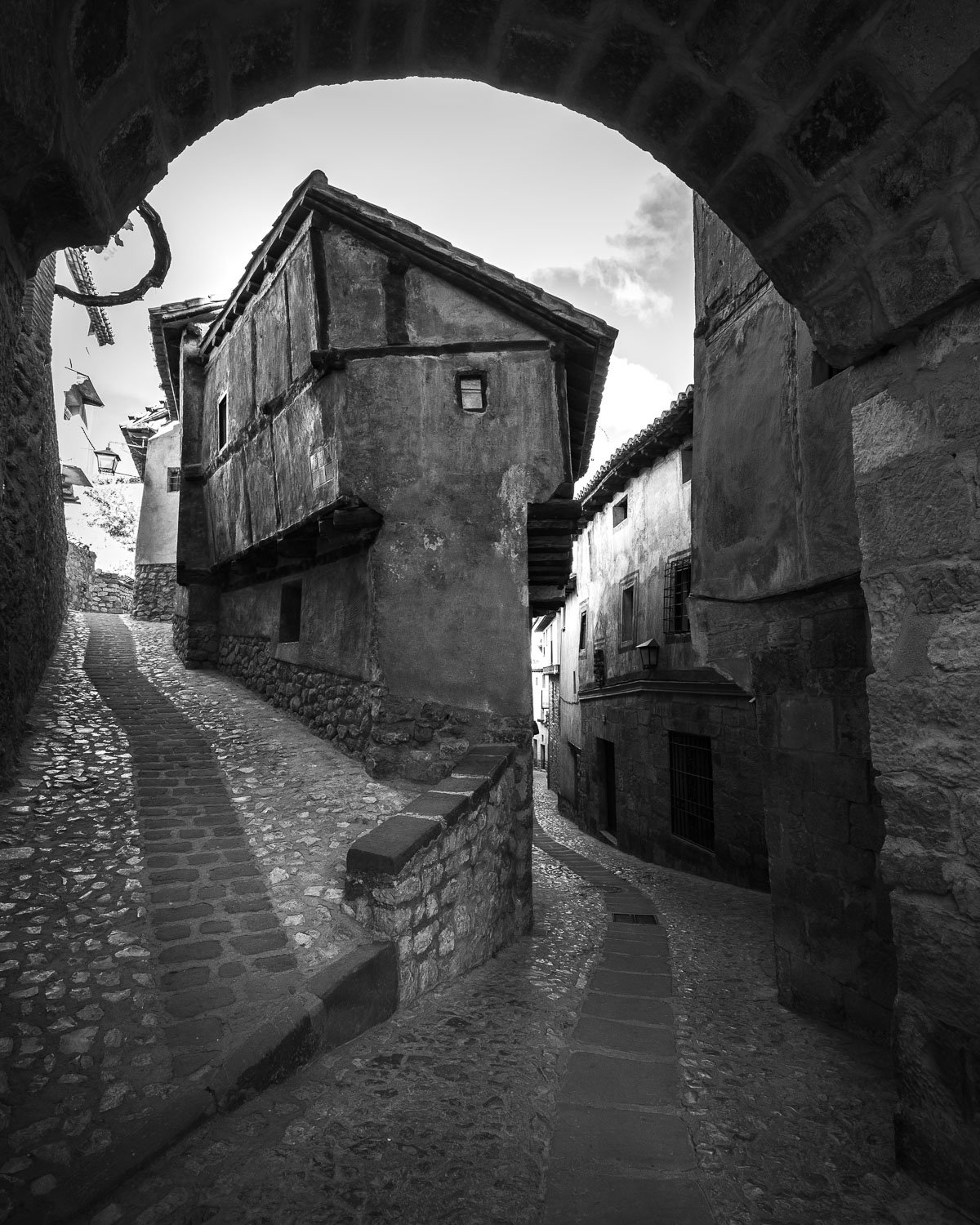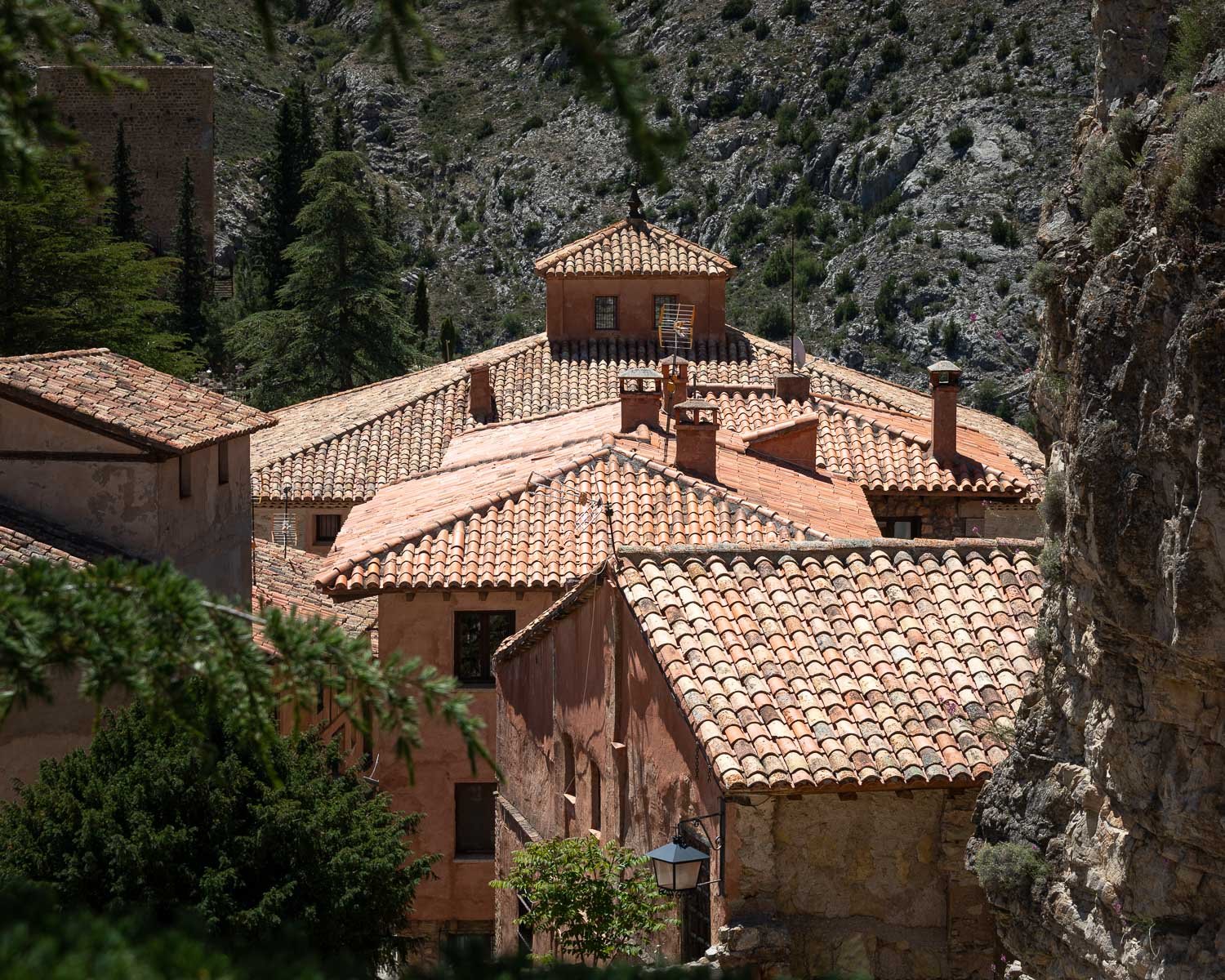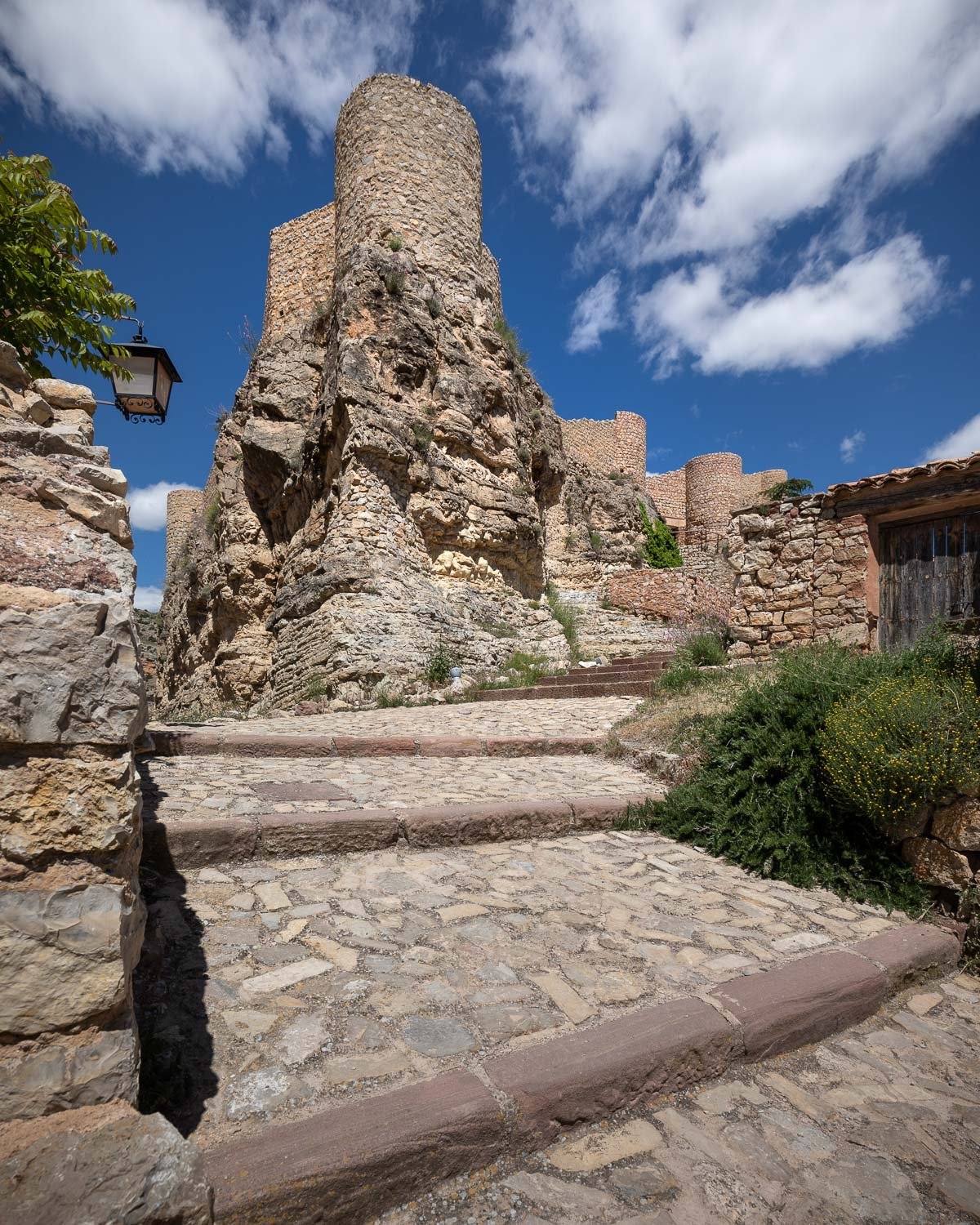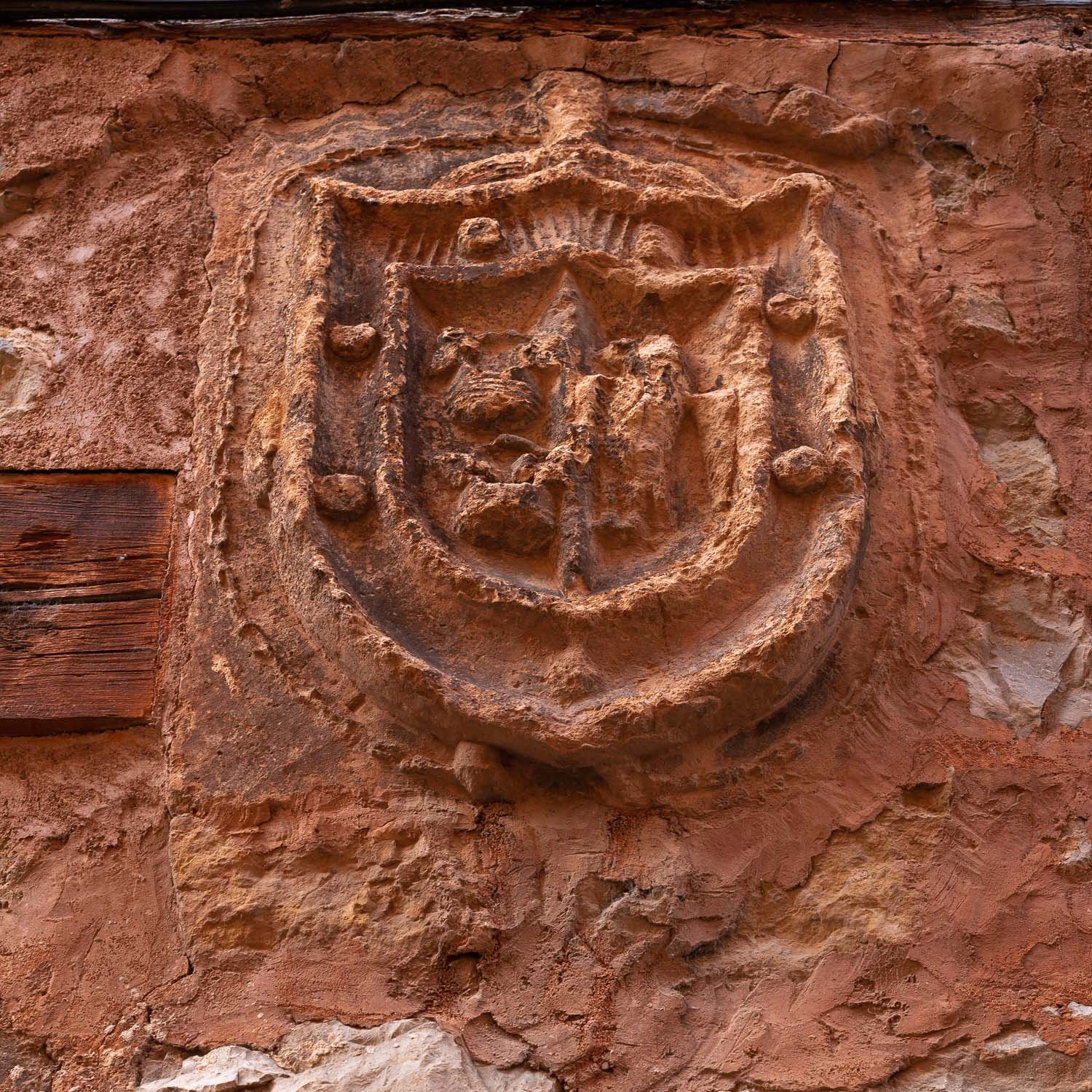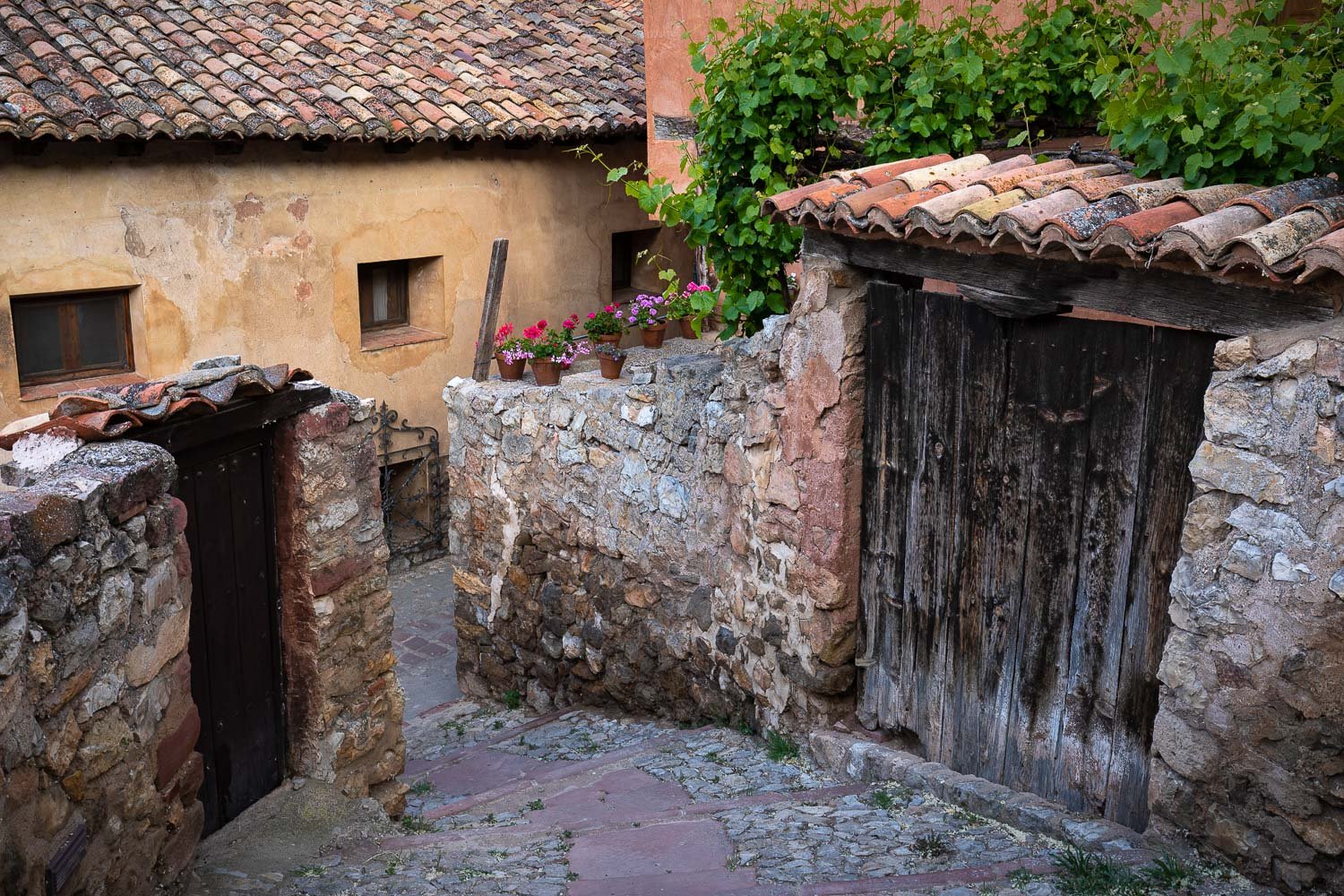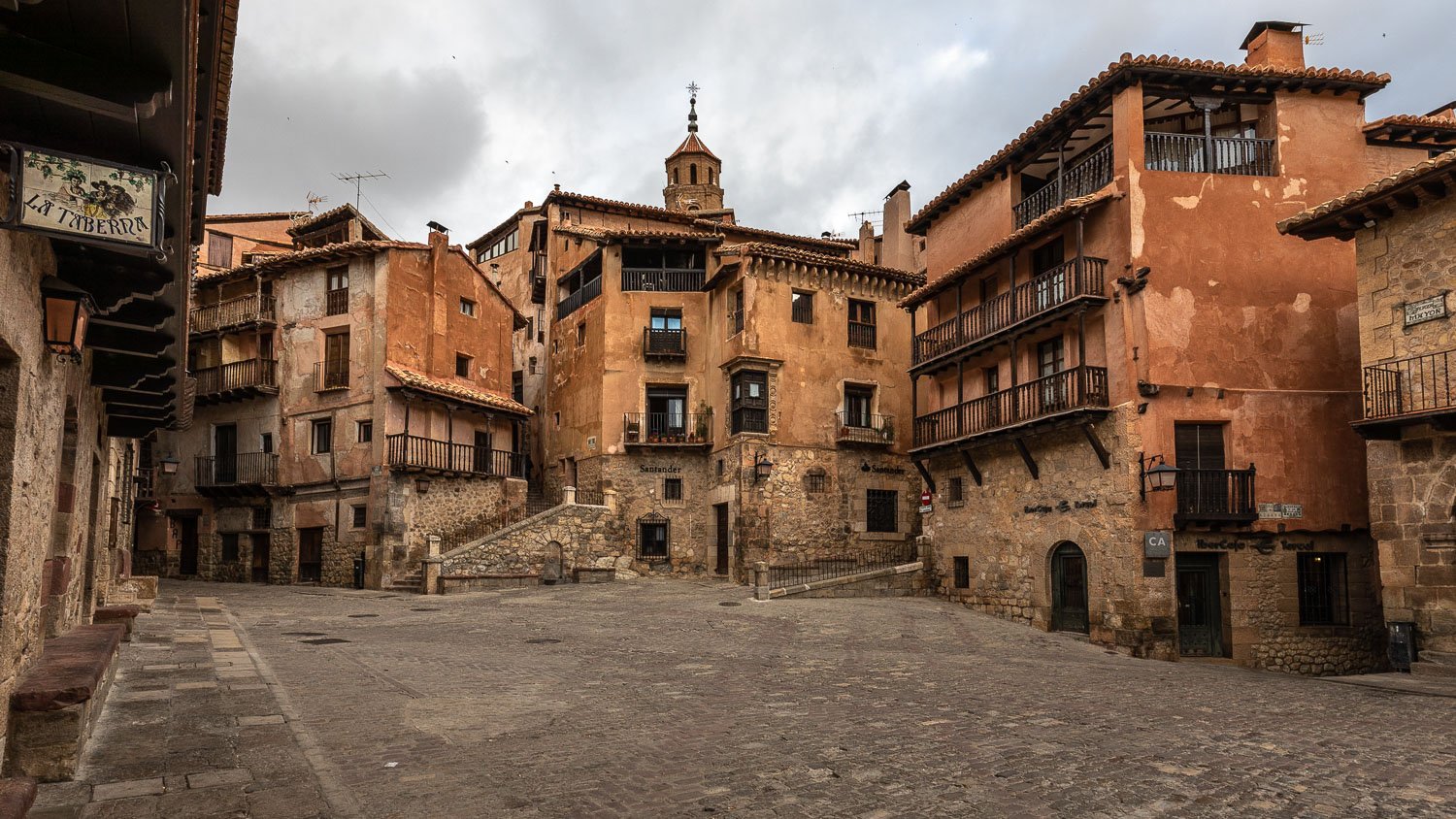Albarracín
‘Spain sounds a bit tame’ was the general response I got to my proposed trip to Albarracín back in June. Ok, it’s not Mongolia or China but, apart from a trip to Majorca as a teenager, I’d not been to Spain and I find any new destination exciting; it’s the discovery of the unknown that is the draw. And part of that draw was the fact that Albarracín is a medieval town that hasn’t changed much over the centuries.
(Click on all the images to see their full size)
Albarracín is located in eastern Spain (between Madrid and Valencia) in the province of Teruel up in the mountains. The oldest, and main part, of the small town is perched on a hillside with an imposing fortified enclosure around it; the wall is far more extensive than the town it protected. What can be seen today corresponds to three different periods of construction: the fortress and Andador Tower are from the 10th century; the walls around the poor area of Engarrada were built in the 11th century and from the 12th century further sections were built along with most of the towers and forts that remain today.
Albarracín is the former capital of the Moorish kingdom of Taifa and has preserved its Islamic and medieval flavour. The town is named for the Hawwara Berber dynasty of the Banzu Razin and was their capital from the early 11th century until it was taken in 1104 by the Almorarids, an imperial Berber Muslim dynasty centred in Morocco. Between 1167 and 1284, Albarracín was an independent Christian lordship under the House of Azagra until it was conquered by Peter III of Aragon.
The streets are cobbled and extremely narrow, so much so that most vehicles are prohibited from entering the old town, and only the smallest can squeeze through. The lack of vehicles and, for the most part, people made it a real pleasure to wander around exploring the streets and alleyways that radiate out from the Plaza Mayor. The majority of the buildings tower several floors above street level, with fabulous wooden doors, metal knockers and handles, and tile house numbers. Being on a hillside, any exploration involves a fair amount of climbing up and down uneven steps - my poor knees didn’t enjoy that! There was something to see around every corner, the colour of the buildings changed constantly with the light and the hillside was peppered with wild flowers interspersed with patches of bright red poppies.
I spent three days wandering around this delightful little town with my camera in hand. The weather was generally dry and warm; there was only one downpour. What I hadn’t expected (or packed for) was the temperature plummeting to near freezing overnight. Dawn shoots were a very cold affair ~ luckily I found a pair of gloves in my camera bag! However, being up so early meant that we were first in the queue waiting for the local bakery to open ~ it sold the most amazing pain au chocolat (I admit to going back for seconds one day) ~ which was a morale boost for everyone.













